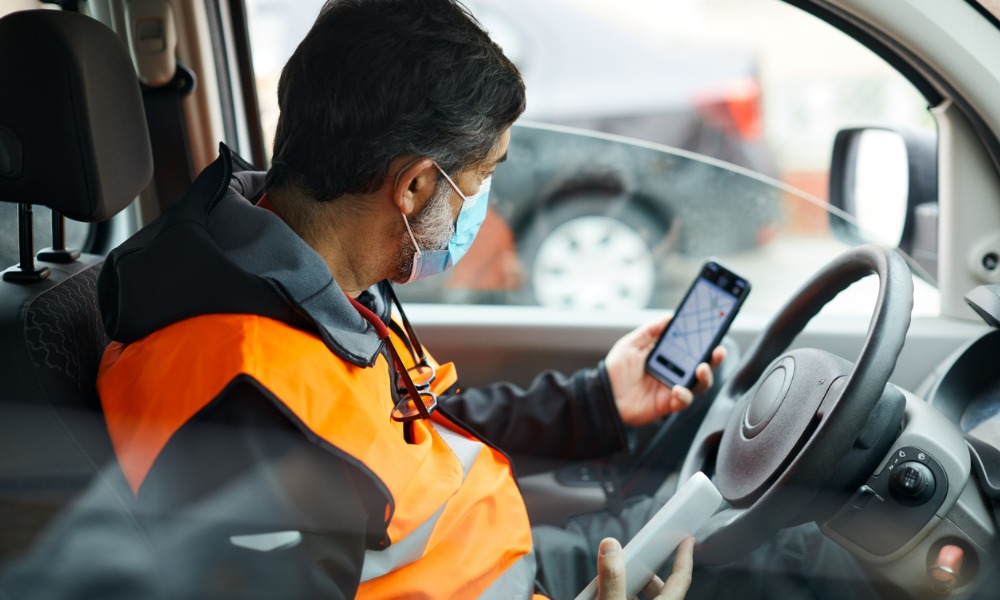CEO explains why these processes can reduce injuries and illnesses as well as fostering higher staff retention and productivity

When it comes to lone worker safety, the question is not if they require extra safeguards, it’s how employers can most effectively protect those who work in isolation, according to one CEO.
Hays Bailey, founder of SHEQSY, a producer of an iOS and Android lone worker app, believes implementing five “must-have” processes that promote safe work environments are critical to a company’s long-term success. He told American Occupational Safety it also leads to a reduction in work-related injuries, illnesses, and workers’ compensation claims, and also increases staff retention and higher productivity.
“When employees work alone - without direct and immediate support from supervisors or colleagues - the threats to their safety are exponentially higher,” he said. “Lone workers are common in most industries and the organizations that employ them must take adequate precautions to keep employees safe.”
Bailey explained his five processes:
1. Provide 24/7 duress assistance
The ability to provide a quick and discreet duress alarm means employees can request and receive emergency assistance whenever they need it, wherever they are. This is crucial if someone requires immediate assistance and immediatey alerts a manager that an incident has occurred.
A lone worker smartphone app has this ability and can notify managers and authorities in an emergency. Bluetooth pendants and wristbands or handheld satellite devices may also be suitable in some environments.
Bailey highlighted SHEQSY’s ability to integrate with Bluetooth wearables and handheld satellite devices for rural areas. He said: “When an emergency occurs, organizations can be notified via email, text message, and automated phone call, or use SHEQSY’s 24/7 monitoring center to verify the alarm event, activate the agreed response processes, and send help to the employee’s specific location.”
2. Enable employee-controlled location tracking
This is a double-edged sword. While collecting employees’ geographical location information is critical in protecting them, it could also potentially infringe on an employees’ privacy.
SHEQSY Dashboard provides a real-time view of working employees’ locations on a map, with respective activity timers - green when active, orange in overtime, and red when an alarm has been activated.
“Vehicle-based GPS tracking systems are very common across industries, but problematic because they can’t be turned off or disabled by employees and do not provide assistance to lone workers once they leave their vehicles,” Bailey said.
“Organizations should consider implementing an employee-controlled safety solution that remains with their employees, proactively notifies managers and the organization of emergencies, and provides lone worker privacy outside of work hours.”
3. Keep records of employee check-ins and check-outs
Bailey believes that if an employee checks in but does not confirm their wellbeing or check-out, according to the organization's lone-worker processes, it should be assumed that an incident occurred and the proper escalation procedures should be followed to confirm the employee’s safety. “Keeping track of lone workers in real-time, and sending help in a timely manner, could be the difference between a minor incident and a serious accident,” he said.
Under OSHA guidelines, organizations that employ lone workers must account for each employee, “throughout each workshift at regular intervals appropriate to the job assignment to ensure the employee's safety and health; and at the end of the job assignment or at the end of the workshift, whichever occurs first". In addition to the OHSA guidelines, states may have their own legislation and guidelines to protect lone-working employees.
4. Request hazard, incident, and near-miss reports
In addition to real-time safeguards like duress alarms and location tracking, lone workers should have the tools to seamlessly report any hazards, incidents, or near-misses they encounter. That way, more safety risks can be mitigated in the future.
Apps allow employees to send hazard reports, accompanied by photos and videos, which can then be seen by managers.
5. Safety forms and checklists
Bailey believes that electronic forms and checklists are time, date and location stamped, ensuring that they are more reliable – and real time - than their paper-based predecessors.
Examples of questions could include: Are you wearing appropriate protective equipment? Have you completed a pre-visit risk assessment? Do you have access to appropriate emergency and first aid equipment? Are there any injury concerns?
Bailey said: “SHEQSY allows organizations to create safety forms and checklists that can be attached to particular lone worker activities. This ensures that the correct process is followed when an employee is working alone and it helps managers keep track of safety data.
“These processes work together to ensure a comprehensive approach to protecting employees, reducing work-related injuries and illnesses. Importantly, when organizations foster a culture of safety and care, employee productivity and engagement improve too.”
About SHEQSY
SHEQSY safeguards employees in real-time while keeping managers informed.
Through the SHEQSY app, integrated Bluetooth wearables, and handheld satellite devices, employees are equipped with duress alarms, periodic check-ins, customizable pre-start forms, hazard reporting, and overtime alerts.
Meanwhile, organizations can monitor, manage, and report on lone workers seamlessly via the SHEQSY Dashboard; managers can visualize employees in real-time with activity countdown timers, manage duress events, configure activity types, schedule appointments, view historical activities, and generate reports.
SHEQSY minimizes the risks lone workers face while helping organizations meet their legislative obligations, manage and monitor productivity, reduce exposure to litigation and lost revenue, and keep detailed records of all lone worker activities.
Protect employees, save time, and be compliant with SHEQSY.
Trial SHEQSY today for free and see how easy it is to keep your lone workers safe. No credit cards or commitments are required.





